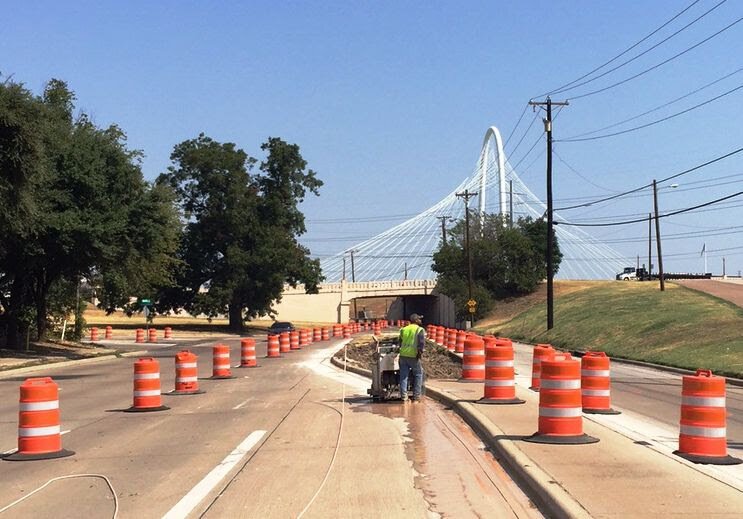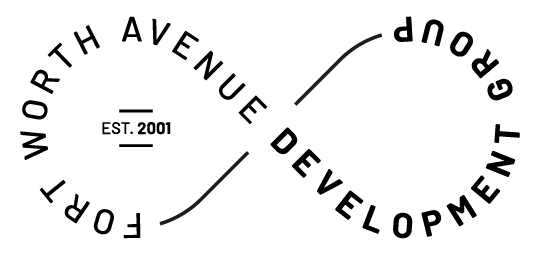The Fort Worth Avenue Development Group’s accomplishments and activities include the following:
SPROUTS COMING TO FORT WORTH AVENUE
From Council Member Chad West:
Neighborhood leaders and friends,
I’m happy to report that the Sprouts zoning matter proposed for the corner of Fort Worth Avenue and Hampton Road was unanimously approved by the Dallas City Council. In the months since the City Plan Commission denied the zoning application, neighborhood leaders and I continued to work with the applicant to seek the additional concessions noted in the Motion, and I appreciate my colleagues on City Council supporting these efforts.
Special thanks to the following individuals:
-
-
D1 Plan Commissioner Amanda Popken
-
Katherine Homan, Fort Worth Avenue Development Group President, and the entire FWADG team
-
David Preziosi, representative for Stevens Park Village
-
Jeff Herrington, architect of the community survey and representative of Stevens Park Estates
-
Rebecca Mohr, President of El Tivoli neighborhood
-
Jane Hamilton, neighbor who assisted with community engagement
-
Brian Maynard, Tim Herfel, Trudy Newton, and Kris Butler, who appeared in person or virtually today (in addition to several of the folks above) to speak in favor of the revised site plan and conditions
-
The 1480 neighbors within 3 miles of the site who took the community survey and attended meetings
-
Sprouts has not updated me on their timeline for construction – the D1 office will keep everyone informed as more information develops.
Thank you!
Chad
Article from Candy’s Dirt…
Sprouts Farmers Market is Coming to North Oak Cliff’s Fort Worth Ave. And Hampton Road

Sprouts Site Plan
The Beckley Avenue at Commerce Street project scope entails realigning the Beckley Avenue travel lanes and providing an at-grade traffic signalized intersection. The project will also provide new sidewalks, dedicated on-street bike lanes on Beckley Avenue, pedestrian lighting, landscaping, drainage and water/wastewater improvements. The $7 million construction project is estimated to be substantially complete in late January 2018.
The area before reconfiguration into a lighted intersection at the base of the Commerce Street bridge:

Work on the northbound lane of Beckley Avenue as part of the long-planned reconstruction of the Beckley-Commerce Street intersection west of downtown. Photo: Roy Appleton
The redesign of the Beckley/West Commerce intersection was stakeholder driven with the final design being a complete and green street. Complete means that the design balances all modes of transportation and responds to context. Pedestrians, bicycles, motorized vehicles, and public transportation are equally treated. Safety features will include median pedestrian refuge, tighter radius turns, sidewalks 11 and 1/2 feet wide, buffered bike lanes, and bike boxes (for left turns). The City is also considering special LED lighting and other features such as benches and bike racks.
There will be two transit stops on Beckley with the bikes lanes traversing behind the boarding areas. A reconfigured Beckley ramp will function as a park/trail entrance. Twenty-six parking spaces were added at the Trinity Overlook, spaces that will be needed when the Trinity Skyline Trail is complete.
A green street is designed to capture stormwater and direct that water into rain gardens/tree wells. The rain gardens will contain bald cypress street trees and native floodplain grasses. The soil and grasses in the rain gardens will mitigate stormwater runoff pollutants before it drains into the Trinity. The design also does all it can to save the 130-year-old pecan tree on Beckley just south of the Commerce Street Bridge.
The new intersection provides much needed connectivity to the future Trinity amenities while making a proper 4-corner intersection out of the existing cloverleaf. The result will be two new parcels of land adjacent to the Trinity for future development or for public space.
Both Beckley and Commerce will stay open during construction. The project was underway as of September 2014, but the work was put on hold until after the Houston Street Viaduct was completely reopened. The $5.8 million project was originally slated to take 15 months. Work on the intersection began in late August 2015, and completion was expected to be in the summer of 2017. As of July 7, 2017, the Public Works Department says that the project is 60% complete, and it should be fully done in the fall of 2017. As of November 28, 2017, the projected completion date is late January 2018.

BEAUTIFICATION GRANTS
The beautification grant program assists business and property owners who are business-level members of the FWADG with streetscaping, beautification, and building-facade improvements that improve the quality of life along the corridor. Proposed projects must improve or beautify the building front or public space through a physical improvement. The grant program provides a cash matching grant not to exceed 50% of the total project value or $2000. Former recipients include Master Engineering & Construction, API Precision Machining, and Buena Vista.
PUBLIC ART
In 2012, FWADG launched Spare pARTS – a public art initiative focused on artwork that makes use of repurposed materials and encourages street life along the avenue. Each year FWADG will host an open call for art submissions, and a jury panel will commission work by a local artist for installation in a public space along the corridor. The first installation, Mobius Bench, is located on Fort Worth Avenue at Pittman. Created by artists Erik Glissman and Nicole Horn from reclaimed cedar and sheet metal, Mobius Bench arches over its patrons to provide shade, and the structure features two benches facing each other to encourage conversation. The work was so successful that DART moved a bus stop to that corner to offer shade and respite to travelers. The second installation is located at 901 Fort Worth Avenue in front of Smoke Restaurant. Artist Robertus Joost van der Wege calls it his “Magic Bike.” Adding a note of whimsy to the corridor is this three wheeled-bike with seven seats and a frame of repurposed, powder-coated metal about 17 feet in length. The Steam Punk Bird created by local artists Scott Shubin and Juli Hulcy was installed at 1021 Fort Worth Avenue at the east side of Metro Paws in September 2014. The Carlton Radial Drill by artist Juan Martinez, donated and funded by Commerce Grinding, was installed in November 2014 at 635 Fort Worth Avenue. Wayfinder by David Lyles was installed at the northeast corner of Fort Worth Avenue and Sylvan in the fall of 2016. The Four-Door Gallery by local artist Gretchen Goetz has begun installation at Fort Worth Avenue and Sylvan. It is expected to be completed in September 2017. A kinetic metal sculpture by Gary Buckner went up in the spring of 2017 at Sylvan and Pollard at the site of Dallas Differential & Gear.
BIKE LANES
As part of its commitment to multi-modal transportation and sustainability, in January 2012, the FWADG partnered with the City of Dallas to install bikes lanes on Fort Worth Avenue from Edgefield to Sylvan. One year later, the bikes lanes were completed. Narrowing Fort Worth Avenue from six lanes to four lanes, the project was a first for the DFW region. Similar projects in other cities have increased retail tax revenue by as much as 50% and reduced accidents, decreased pollution, and improved community recreation. FWADG will continue to monitor how the growing bicycle improvements benefit commerce. The next segments of the bicycle network will connect Fort Worth Avenue with downtown via the Coombs Creek trail and the new I-30 bridge. Sylvan Avenue will have new bike lanes to Colorado.
REZONING
In 2005, the 3 1/2 mile corridor from N. Beckley to Westmoreland was rezoned to provide the foundation for neighborhood-friendly redevelopment while respecting existing businesses that provide needed jobs and services to the area. Planned Development District PD 714 plans for medium-density, mixed-use development that will result in a vibrant, inner-city neighborhood with new buildings fronting the street with wide sidewalks, street canopy trees, and pedestrian amenities such as windows, benches, planters, and awnings. The PD provides for on-street parallel parking and off-street parking provided largely to the side and rear of the buildings. A mixture of residences, retail, businesses, and offices should create a lively, walkable, urban community. Residential density adequate to support desired retail and restaurant development is a must to create an environment where people can live, work, and play.
